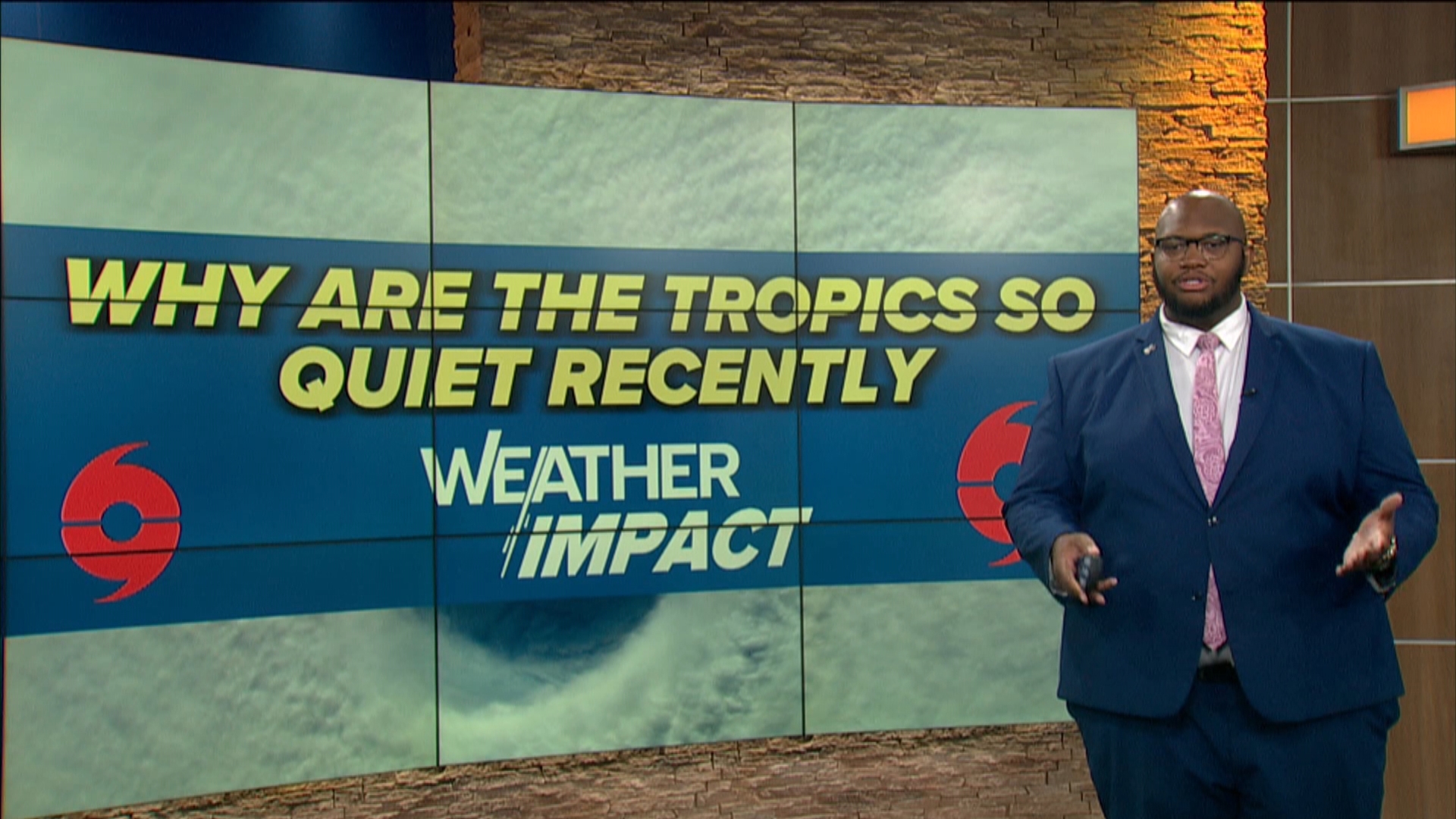TOLEDO, Ohio — After a hot start to the hurricane season where we saw the impressive Hurricane Beryl bulldoze its way through the tropics as a category 5 storm, the tropics have been oddly quiet.
Hurricane Beryl kicked off the season, bringing destructive winds to the Texas coast and multiple destructive tornadoes to the southern states - and even numerous damage reports across the Midwest. Remnants of Beryl also affected northwest Ohio, dumping rain showers across the area.
Some parts of the Toledo Metro measured up to 2.25 inches of rainfall after Beryl, a result of the earliest category 5 hurricane in the Atlantic on record.
Since then, however, you may have noticed that the Atlantic and Gulf have been radio silent. Typically, the hurricane season is active weekly, spawning some form of tropical wave or storms at least, beginning June 1.
So why aren't we seeing additional storms and hurricanes? It has to do with dust coming off of the Saharan Desert in Africa.
First Stages of Tropical Development & Saharan Dust
Most people think the start of tropical disturbance all starts in the ocean, but there is the stage that happens before that.
According to experts at the National Hurricane Center, perturbations and disturbances in the tropical easterlies typically move from east to west. These are often seen as inverted troughs of low pressure (inverted-V pattern in satellite imagery) and are significant rain producers.
Convection is typically generated by an instability of the African easterly jet, scientists said. The jet arises because of a reversed lower tropospheric temperature gradient over west-central North Africa due to extremely warm temperatures over the Sahara Desert, and substantially cooler temperatures along the coast of Guinea.
The Sahara Desert is the largest hot desert on Earth, and due to trade winds, some dust and sand are lifted in the air. Once this happens, these massive sand dust plumes migrate over the Atlantic Ocean and the Caribbean, putting major dampers on tropical development.

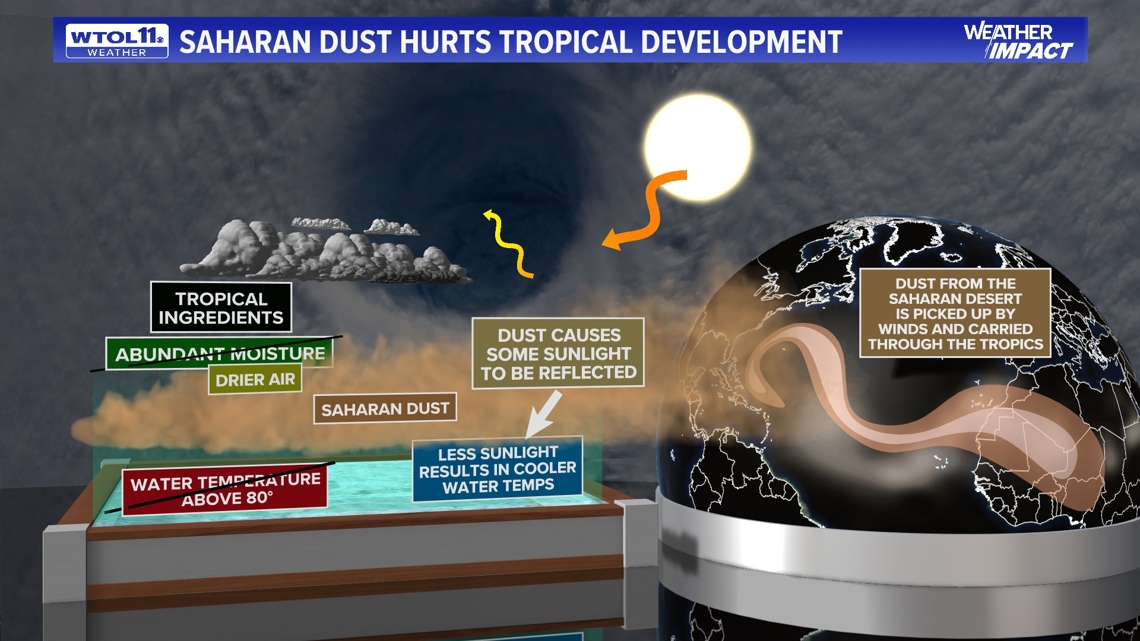
Effects of Saharan dust
As Saharan dust hovers over the sky of the tropics, it not only covers the sky with a tan milky look, but it also has strong effects on land as well. For example, recently there have been frequent rounds of Saharan dust coming off the coast of Africa. This has resulted in significantly cooler water temperatures off the coast of Africa.
Typically, around this time of year, sea-surface temperatures average around the mid-80s off the coasts of western Africa. Due to the Saharan dust, this dropped temperatures significantly to 10 to 15 degrees colder than average. The main ingredients tropical disturbances - the precursors to hurricanes - need are warm water temperatures above 80 degrees and plenty of sunlight.

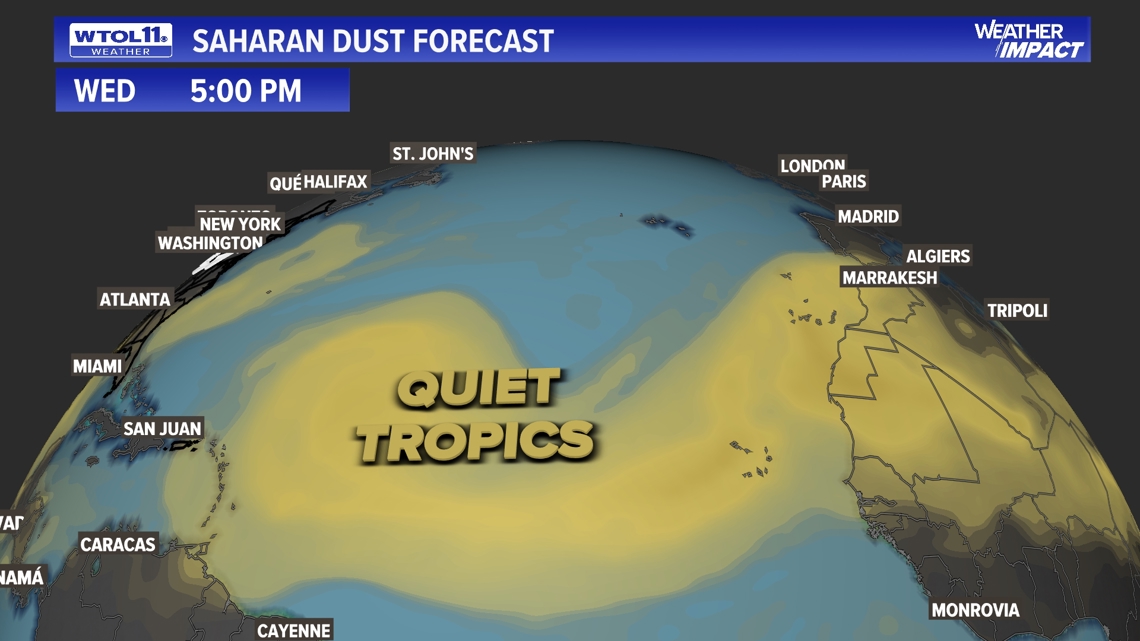
With Saharan dust looming over the skies, tropical development has struggled with cooler water temperatures and less sunlight. The Sahara Desert is known for hardly ever having any rain or any moisture to create rain. This process acts in the same way over the tropics, where if Saharan dust is present, that reduces the possibility of any abundant moisture to help those tropical disturbances to form.


Is the Saharan Dust a good thing?
The answer is yes and no. When it comes to the development of hurricanes and tropical storms, Saharan dust significantly reduces the threat of hurricanes forming in the Atlantic and Caribbean, which is a good thing for Gulf areas in the United States, and Caribbean islands.
Although this stuns the development of tropical disturbances, the effect of air quality can be especially dangerous to communities and cities in the southern states. Just this past week, there were several sightings of “dirty rain” in Orlando, Florida, due to the mixture of Saharan dust and rain clouds.
To put this in perspective, it is impressive that the Saharan dust can travel thousands of miles to bring impacts to parts of Florida.
So while Saharan dust can potentially save lives and prevent damage by limiting the formation of tropical disturbances, it can have substantial impacts on air quality in cities on the Gulf Coast and Atlantic coastal areas.

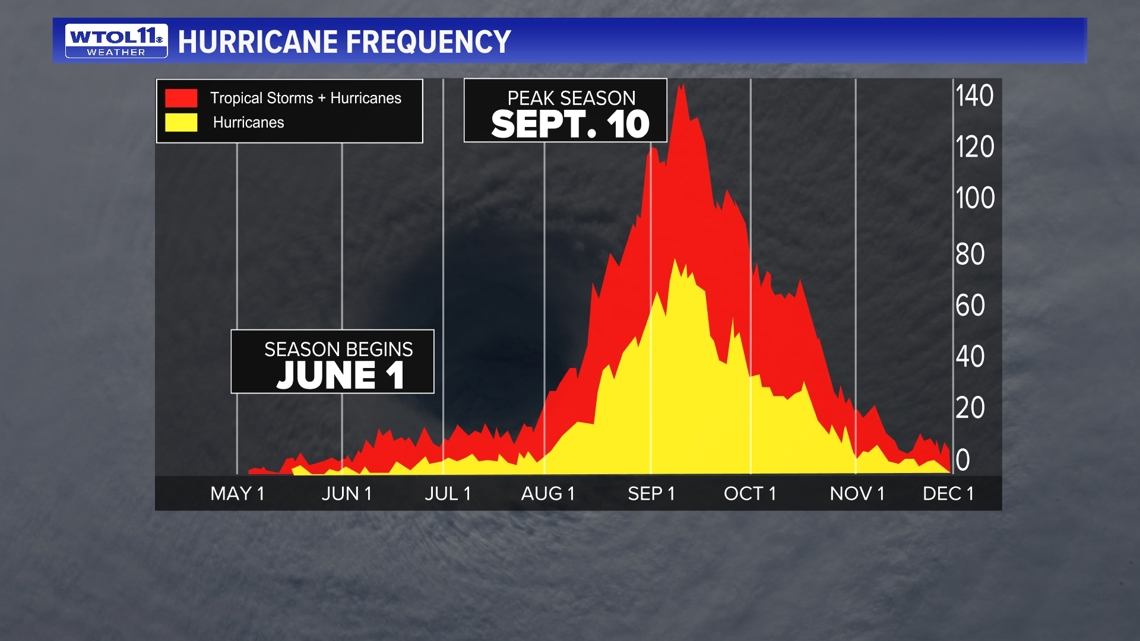
Saharan Dust Impacts
When: Every year during the Summer and late fall months, the threat of tropics looms with the chance for a life-threatening system to impact people across the Atlantic Ocean coast and Gulf. Over the last four years, Saharan dust has become a more common topic and the answer to why the tropics go quiet for weeks at a time.
According to NASA Global Climate Change, sea surface temperatures directly impact wind speeds, so when the northern Atlantic warms relative to the south Atlantic, the trade winds that blow the dust from east to west become weaker. As a result, the slower winds pick up and transport less dust from the Sahara. Although we have seen an increase in Saharan dust over the past few years, it will likely become less frequent leaving tropics wide open for more tropical development in the future.
Impact: Although our area is rarely impacted by Saharan dust, areas further south are being impacted severely for days by it. The presence of Saharan dust will continue to keep the tropics quiet, which is not a terrible thing.
However, the chance of more dust plumes rolling in will result in the decline of air quality across the southern states, causing many residents to stay indoors for longer periods. According to the Caribbean Public Health Agency, Saharan dust worsens air quality and increases the levels of particular matter in the air.
This can be hazardous, especially to small children, older adults and people with underlying lung conditions and chronic cardiopulmonary diseases. Saharan dust also impacts crops. While plants are trying to grow, dust can decrease sunlight and temperatures. Corn, for example, requires ample sun and heat. If dust is present, it can stunt their growth.

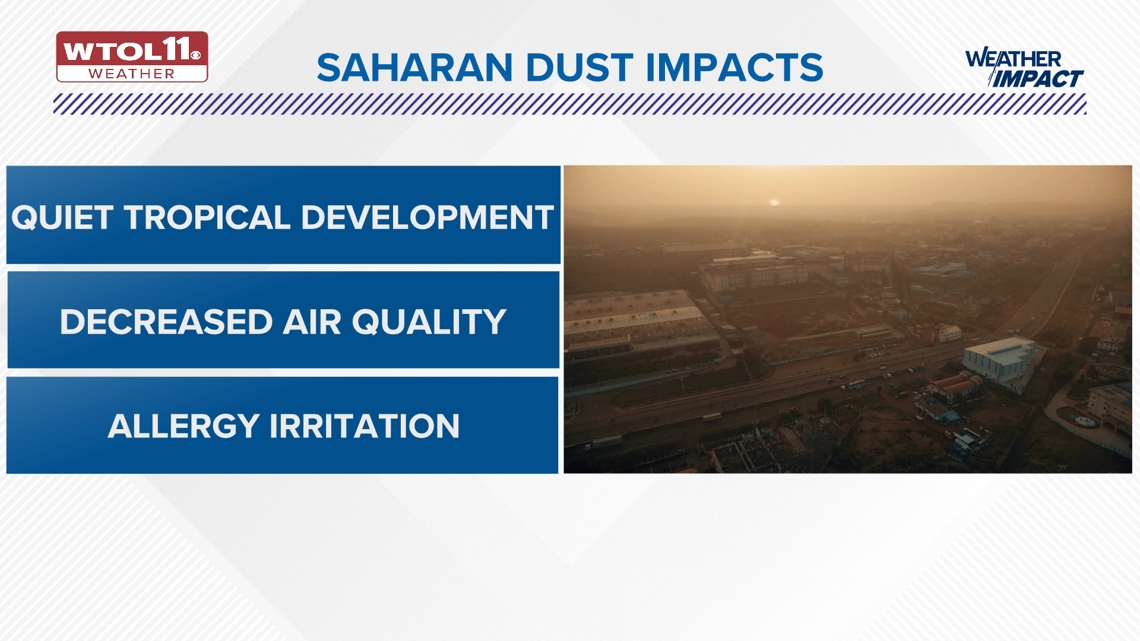
Need: For the Saharan dust to come to a halt, upper-level winds and trade winds will need to weaken, which will result in the stop of Saharan dust being lifted in the air, and eventually relocated over the tropics.
Although there is not much that can be done from a human activity standpoint, if people are affected by the dust, there are ways to cope with this issue. According to the Baylor College of Medicine, they recommend staying indoors as much as possible while the dust is in the air or wearing a mask while outside.
Run a HEPA filter indoors to purify air, especially in the bedroom. Patients who use rescue or controlling medications for pulmonary conditions should always have them in their hands and use them as prescribed. Seek professional medical advice at the first sign of difficulty breathing.
For less severe symptoms, standard allergy medications such as antihistamines and steroid nasal sprays might be helpful. This is something that the tropics will deal with throughout the next several weeks.
WATCH MORE FROM WTOL 11 WEATHER IMPACT

